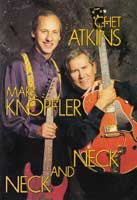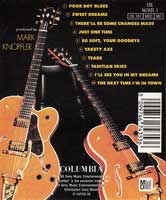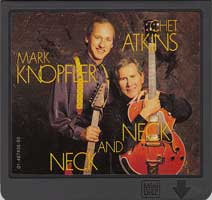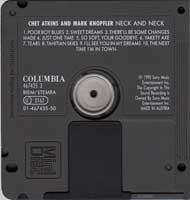Sound Emporium, Nashville, USA
Hillbilly Heaven, London, UK
- Poor boy blues
- Sweet dreams
- There'll be some changes made
- Just one time
- So soft, your goodbye
- Yakety axe
- Tears
- Tahitian skies
- I'll see you in my dreams
- The next time I'm in town




MiniDisc (MD) is a magneto-optical disc-based data storage format offering a
capacity of 74 minutes and, later, 80 minutes, of digitized audio or 1
gigabyte of Hi-MD data. Sony announced the MiniDisc in September 1992 and
released in November of that year for sale in Japan and in December in
Europe, Canada, the USA and other countries. The music format was originally
based on ATRAC audio data compression, but the option of linear PCM digital
recording was later introduced to meet audio quality comparable to that of a
compact disc. MiniDiscs were very popular in Japan and found moderate
success in Europe. Sony's MiniDisc was one of two rival digital systems,
both introduced in 1992, that were targeted as replacements for the Philips
Compact Cassette analog audio tape system: the other was Digital Compact
Cassette (DCC), created by Philips and Matsushita. By the time Sony came up
with MiniDisc in late 1992, Philips had introduced a competing system, DCC.
This created marketing confusion very similar to the Betamax versus VHS
battle of the late 1970s and early 1980s. Sony attempted to license MD
technology to other manufacturers, with JVC, Sharp, Pioneer, Panasonic and
others all producing their own MD systems. However, non-Sony machines were
not widely available in North America, and companies such as Technics and
Radio Shack tended to promote DCC instead. Despite having a loyal customer
base largely of musicians and audio enthusiasts, MiniDisc met with only
limited success. It was relatively popular in Japan during the 1990s but did
not enjoy comparable sales in other world markets. Since then, recordable
CDs, flash memory and HDD and solid-state-based digital audio players such
as iPods have become increasingly popular as playback devices. The initial
low uptake of MiniDisc was attributed to the small number of pre-recorded
albums available on MD as relatively few record labels embraced the format.
MiniDisc technology was faced with new competition from the recordable
compact disc (CD-R) when it became more affordable to consumers in 1996. The
biggest competition for MiniDisc came from the emergence of MP3 players.
With the Diamond Rio player in 1998 and the Apple iPod, the mass market
began to eschew physical media in favor of file-based systems. On 1 February
2013, Sony issued a press release on the Nikkei stock exchange that it will
cease shipment of MD devices, with last of the players to be sold in March
2013.